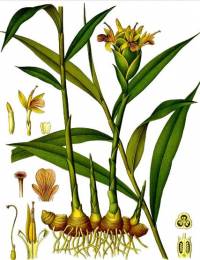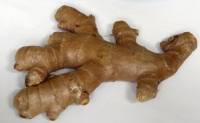Space plants: 15 cm apart Reduce water as plant dies back to encourage rhizome growth. Compatible with (can grow beside): Grow in separate bed Ginger is a warm climate plant. To grow well it needs lots of water and nutrients. Prepare the soil by adding compost which will retain some moisture but not get saturated. Add a small amount of sand to ensure drainage. Water regularly in summer to keep moist. In a pot, in addition to watering to keep moist, water ginger about once a fortnight with a seaweed or other liquid fertilizer. This perennial will die down in autumn. Remove the dead leaves. In spring lift the root clumps and break them up into smaller pieces to replant. Harvesting Ginger You can harvest ginger root after the plant dies down in winter, digging around the plant to cut off a piece of the older root. The young root with shoots is the actively growing plant and should be left to resprout. You can also carefully dig down under the plant through the growing season to cut off bits of the older root for use, just be careful not to disturb the rest of the plant too much. Let plants become well established before harvesting - it is often best to wait until the second growing season. Culinary hints - cooking and eating Ginger Ginger root freezes well either whole or grated, and can be used direct from the freezer in most recipes requiring fresh ginger. Can be used as a tea.

